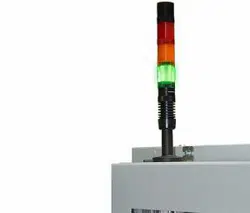Loading ...
Loading ...
Loading ...

MK LIT (E5) 01/2021 page 17/172
Charge and discharge cycles can be carried out within the test room (chamber interior) at different temper-
ature values. When testing lithium-ion batteries, various faults may occur. The European Council for Auto-
motive and R&D (EUCAR) has divided these into different hazard levels (chap. 2.1.1). The battery test
chambers LIT MK can, under defined conditions, cover error cases up to and including hazard level 6. In
order to enable safe inclusion of the event in the chamber for such error cases, the chamber includes
various safety measures (chap. 7.1).
Depending on the EUCAR hazard level of the planned tests, the insertion of different battery types is per-
mitted:
• For tests with EUCAR hazard level up to max. 3, cells, modules (interconnected cells), and battery
systems (total systems including monitoring electronics) are permitted.
• For tests with EUCAR hazard level 4 to 6, only individual cells (i.e., not interconnected) are permitted.
Abuse testing, destructive testing, and the generation of short-circuits in the cells, modules, and
systems are NOT generally permitted. Deliberate destruction of the inserted batteries (operational,
mechanical) is not permitted. Deeply discharged cells or mechanically damaged cells must NOT be
introduced.
The development of an explosive atmosphere must be reliably ruled out. Never exceed the Lower Explosive
Limit (LEL) when releasing gases. For this reason, the quantity of gas released during operation must be
reliably limited.
The chambers are not equipped with explosion protection measures. Tests with EUCAR hazard level 7 are
not permitted.
Additional safety measures (flushing/inertization) may be connected by the operator. Gas connection facil-
ities for inertization, as well as a pressure reducing valve and flow meter are provided by BINDER. Inertiza-
tion can be used by a certain continuous flow or by regulation for oxygen suppression. The customer will
be provided with the connections for the solenoid valve and the analog value of the oxygen sensor. The
operator is responsible for safe operation of the flushing/inertization. Technical measures of the op-
erator are not monitored by the test cabinet. Responsibility for safety in such measures lies exclusively with
the operator. In the event of damage, there is a possibility that the cell itself generates oxygen through the
internal chemical reaction (EUCAR hazard level 4).
2.1.1 EUCAR Hazard levels – Overview
EUCAR
Hazard level
Classification criteria and effects
0 No effect
∅ no functional impairment
1
Activation of passive safety device
Cell still usable, safety devices must
be repaired
∅ No defect, no leakage, no degassing,
no thermal reactions, cell is reversibly
damaged
2 Defect, damage
∅ no leakage, no degassing, no thermal
reactions, cell is irreversibly damaged
3 Leakage
mass loss < 50%
∅ No degassing
Mass loss / weight loss of electrolyte
< 50%
No fire, no breakage, no explosion
4 Degassing
mass loss > 50%
∅ no fire, no breakage, no explosion,
mass loss / weight loss of electrolyte
> 50%
5 Fire or flames
∅ no breakage, no explosion, no flying
parts
6 Bursting, breakage. Flying parts of the
active electrode masses
∅ no explosion
7 Explosion. Cell destruction
Loading ...
Loading ...
Loading ...
